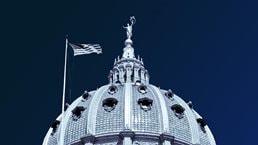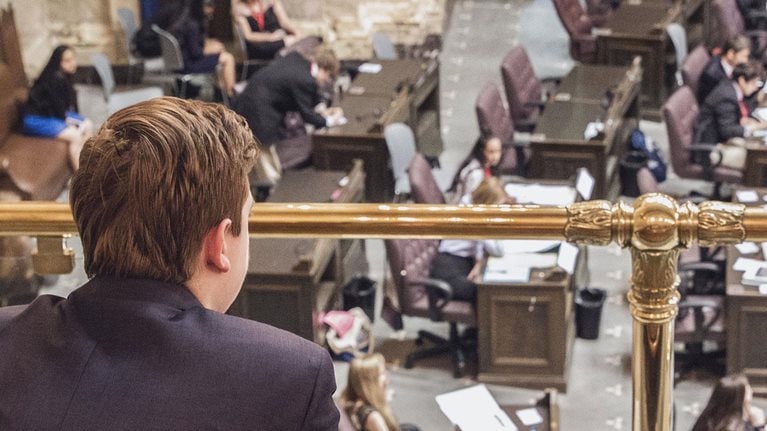In recent months, the most urgent task facing US governors and mayors has been to combat the public-health and economic effects of the COVID-19 pandemic. For the nine governors and dozens of mayors seeking reelection, another term in office will provide more time to restore and rebuild economies and present a historic set of challenges that range from reprioritizing projects to reimagining the way their organizations work.
While the effects of the crisis on the second terms of elected leaders cannot be predicted with certainty, data gathered before the pandemic suggest that the second term is usually more difficult than the first. Second-term governors tend to be encumbered by lower levels of job approval, less political capital, and a shorter window in which to get things done, as well as significant staff turnovers and the risk of becoming a lame duck.
We conducted in-depth interviews with senior members of five second-term administrations that served in the past decade, gathering their recommendations for the ideal way for governors and mayors to approach their second terms. Those we interviewed consistently suggested using a multimonth period before election day to help the administration plan and prepare for a second term. A transition team can put those months to good use by, for example, clarifying second-term aspirations, organizing the senior team, and laying out a concrete plan for fulfilling the reelected leader’s campaign promises and priorities. Having such a plan can also (paradoxically) free an administration to take calculated risks that could eventually pay off. On the other hand, an administration that fails to prepare may risk limiting itself to reacting to events and thereby squandering the opportunities a second term affords—especially when the stakes involve constituents recovering from a pandemic.
A victory, then an uphill climb
Public opinion is less kind to second-term governors than to the same people during their first terms. A McKinsey analysis of publicly available polling data showed that 14 of 18 governors who served two full terms during the period from 2008 to 2019 ended their second terms with lower job-approval levels than when they started. On average, the second-term governors left office with net approval ratings 13 percentage points lower than their ratings at the beginning of their second terms (exhibit). By contrast, first-term governors’ net approval ratings decreased an average of only four percentage points from the beginning and the end of their first terms.

Reduced approval by constituents could erode a reelected administration’s political capital and be an obstacle to accomplishing goals for the second term, especially in difficult times such as the COVID-19 pandemic.
Indeed, the pandemic has produced an urgent need for second-term governors and mayors to reexamine their priorities as they confront lower state and city revenues and consider sustainable ways to make their governments more efficient. The key to a productive second term will be reevaluating and optimizing priorities that support the state’s or city’s short-term recovery and long-term resilience.
Administration leaders have little time to prepare for the second term during the period that follows their reelection. For example, in the hundred or so days after election day, a governor must deliver an inaugural address, publish the first state budget for the new term, roll out a legislative agenda, and deliver a State of the State address. An administration without a solid plan could find itself merely reacting to real-time events and working on projects left over from the first term that have not been reprioritized.
Such an approach would also be a missed opportunity to build a team to carry out the comprehensive vision for the second term that was laid out during the campaign.
Despite such challenges, a second term is an opportunity for the governor or mayor to re-create a sense of discipline among the top team’s members, some of whom are likely to be new. This discipline can help with onboarding the new senior leaders and aligning the administration with the elected official’s vision for the second term. These tasks will be critical to navigating states and municipalities along a path that leads through recovery and out of the pandemic.
Preparation for a second term
Experienced governors, mayors, and senior staffers told us there is an art to preparing for a successful second term. We conducted interviews with them to help us understand the most important components of the preparatory period. By the end of it, reelected governors and mayors should be able to plunge into their second term immediately and begin to execute without delay their strategic priorities for the new term—which now must include plans for recovering from the pandemic, building resilience, and even reimagining operations.
Begin planning the transition before the election
The rapid pace of a campaign is not always conducive to careful planning of a second term, let alone making longer-term plans to deal with the ongoing fallout of the pandemic. Former senior staffers of state-level administrations suggest beginning to plan three to four months before the election for the second term. Leaders could establish a one- or two-person transition office to coordinate across the administration and begin to align preelection planning with the governor’s or mayor’s public commitments for the term. Especially important during the pandemic, the planning period could address both plans for the second term and longer-term road maps that could make the state or city more resilient. When consistently updated, this kind of planning can also facilitate ongoing communication among all parts of an administration.
Would you like to learn more about our Public & Social Sector Practice?
Because governors and mayors will be exceptionally busy in the months before an election, top aides can use the period to work with the leaders of state or city agencies to assess the progress made by the administration so far. For instance, the transition team could block out several hours to meet with agency leaders to assess progress the individual agencies have made toward the first-term goals and find out how the agencies’ needs have changed as a result of the pandemic. This exercise is especially important to conduct with agency leaders who plan to depart at the end of the first term. These meetings might also focus on personnel, leadership, interagency cooperation, and other challenges that can be tackled anew in the next term.
Refine aspirations and build a lasting impact
Preparations for the second term could include the candidate’s reassessment of administration priorities, identification of barriers to progress, and reevaluation of the administration’s goals and priorities that are aimed at the governor or mayor having a lasting impact.

Reopening US state government operations on a path to the next normal
The administration’s top team can use the preelection planning period to prioritize aspirations aimed at maximizing accomplishments in the second term. Teams can identify habits, initiatives, and partnerships that worked well in the first term and shed the elements that didn’t serve the administration’s mission well. A detailed, self-critical assessment of the first term’s priorities and progress could help decision makers determine whether unrealized goals should still be high priorities in the pandemic environment.
This kind of inward-facing assessment can be difficult to execute in the normal course of governing because, particularly during campaigns, the focus is usually on highlighting successes and laying out further plans rather than evaluating past actions, including failures. Correcting bad habits and crisis-driven modes of working will be especially important as administrations juggle fiscal, economic, and social priorities in the second term.
Most important, the top team can use the time to lay the groundwork for accomplishments that will have a lasting impact—one or two transformational changes that will positively affect residents’ lives beyond the second term. In particular, administrations can respond to the pandemic’s challenges by creating more sustainable solutions to constituents’ needs related to economic recovery, access to healthcare, and a sense of safety. The diverse areas in which government agencies and other public-sector organizations have made innovations, from flexible hours for public-sector employees to seamless digital services for residents, might be promising starting points.
Taking the time to balance new priorities and budget limitations with long-term aspirations remaining from the first term can help an administration focus and anticipate the trade-offs. A refreshed platform, clear aspirations, and a sense of bounded optimism can also attract new talent to the administration (see sidebar “Refreshing and reenergizing top talent”).
Refresh the team
A second term is also an opportunity to refresh the top team, refine and revise norms, and discover blind spots in the ways the team has been collaborating. In the teams we studied, 22 to 40 percent of senior political appointees left within a year of the governor’s reelection. The preelection planning period provides a prime opportunity for the administration to evaluate the mix of talent on the top team and identify and recruit people whose expertise will help reach the second-term goals. A team can use the planning period to consider recruiting experts and practitioners with ideas and perspectives that may differ from those of the first-term team.
For instance, a post-COVID-19 policy platform may require seeking new types of expertise, perhaps by identifying the types of skills and backgrounds missing from the state’s pandemic response center and what coordinating the ongoing pandemic response and recovery will require. It could be an opportunity to make the team more diverse along dimensions such as gender, race, religion, and sexual orientation.
Senior stakeholders might also consider reevaluating the working norms for behavior and principles of those who work in the administration. For instance, based on the lessons learned about working together in the mayor’s first term, the mayor’s office of a large US city optimized its meeting schedule to make the most of everyone’s time.
Because governors and mayors often have sweeping aspirations, roles that bring together multiple agencies can help to synthesize elements of individual goals. Such cross-cutting roles can be crucial to the success of major initiatives, such as cannabis legalization or pandemic responses (see sidebar “Optimizing the second-term organization”).
Cement the changes
A former state chief operations officer pointed out to us that a governor has only two or three years to cement a lasting impact. The pressure of working with reduced political capital is counterbalanced by more political and operational freedom in the second term because most second-term governors cannot run for a third term. Second-term administrations can use the momentum of reelection and—if a third term is not possible—sometimes a no-regrets atmosphere to engage agencies to embed important programs in their regular operations.
For instance, the best way to convert successful initiatives into a part of normal operations is to work with the affected agencies directly instead of setting up separate offices. One approach is for the governor or mayor to give the agencies ownership of the administration’s signature initiatives. This ownership can help to align agency leaders and technical staffers with the same interests and goals, which makes it more likely changes can be sustained even after the governor or mayor leaves office.
A governor or mayor might feel validated and relieved after being reelected. However, the most productive second terms of office are likely to be the result of extensive planning that takes place before election day. For administrations with lofty—and, particularly today, urgent—goals that will protect lives and livelihoods, planning well ahead of the next election is essential.


